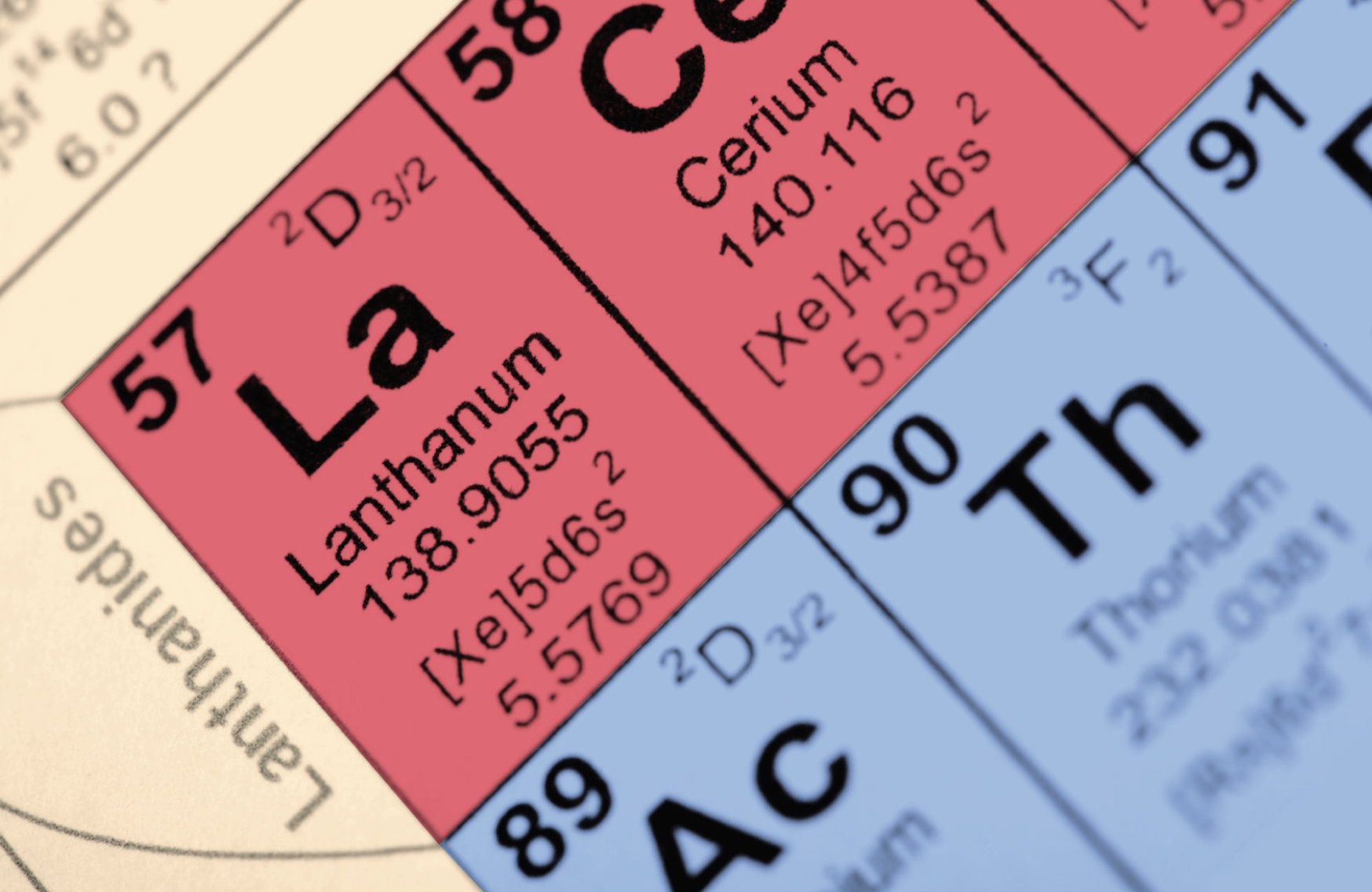As a specialist in inorganic and materials chemistry, Assistant Professor of Chemistry Eric Schelter is truly in his element in the f-block, an area of the periodic table representing a group of 15 inorganic elements called “lanthanides.”
Lanthanides are a necessity of life in the 21st century. They are used in the manufacture of renewable energy devices such as wind turbine generators and the batteries for hybrid and electric vehicles. They are also used in the production of smart phones, flat screen panel displays, and fiber optics (which are essential for Internet communications). Currently, China mines and processes 98 percent of the world’s lanthanide supply. That market dominance caused international tension in 2009, when China drastically reduced its lanthanide exports, effectively putting a chokehold on the worldwide availability of these natural elements.
“After it was clear that China was reducing the worldwide availability of mined lanthanides, the U.S. government became interested in developing the chemistry and engineering necessary to restart mining of domestic supplies,” says Schelter.
Schelter believes that science should serve the national interest. He has been an outspoken advocate of developing the infrastructure and expertise to effectively mine lanthanides in the United States. Currently, there is only one operating lanthanide mine in the Western hemisphere, located in Mountain Pass, California.
Schelter’s research focuses on improving the chemical processes to obtain elements from ores and separate them, while minimizing negative environmental impacts. “The problem is that both the mining and processing of lanthanides cause significant environmental damage because of the toxic chemicals used to extract lanthanides from ores. We need to create processes to extract and purify lanthanides with minimal harm to the environment.”
Schelter notes the irony that “eco-friendly” products like hybrid car batteries must be produced with lanthanides. “People buying a Toyota Prius do not realize that their hybrid car battery may be part of a larger environmental problem with the current ways lanthanides are mined and processed,” he says.
He explains that environmental regulations for mining in China are weaker than those in the West. China began building the infrastructure to mine lanthanides in the 1980s, when the consumer market for electronics started booming. The Chinese government recognized that they had good sources of lanthanides and made an investment in mining them, cornering that market and giving corporations another justification for moving manufacturing facilities to China.
Schelter’s work has been recognized at the highest levels. Last winter he was the recipient of a Cottrell Scholar Award, given by the Research Corporation for Scientific Advancement (RCSA). The $75,000 award will help fund his research.
Long the purview of science, lanthanides have entered the realm of geopolitics, and Schelter believes that the answer to this dilemma lies in basic chemistry. “We must continue to improve upon the process of getting these elements out of the ground and bringing them to the market. Chemistry plays a critical role in doing that.”





